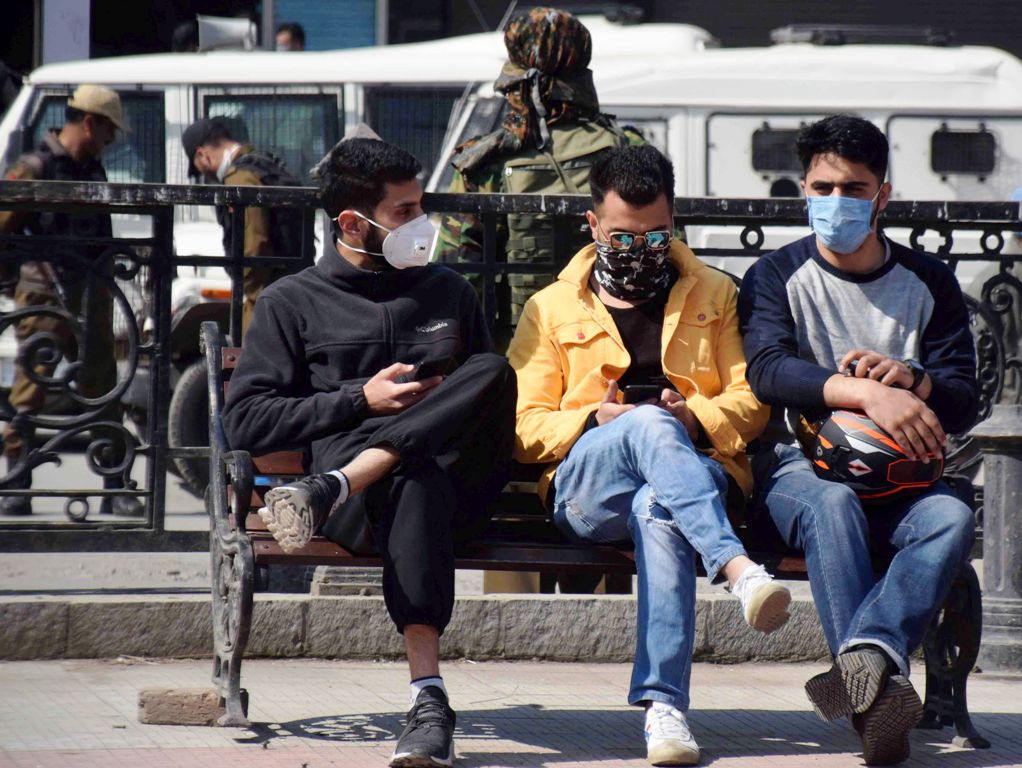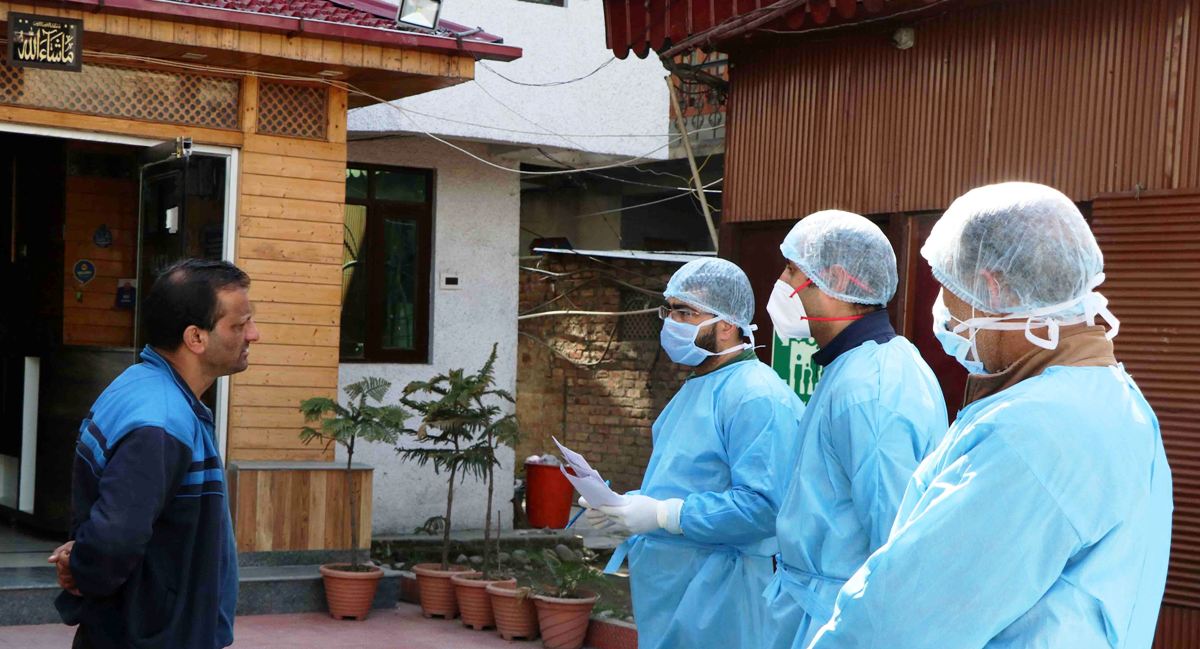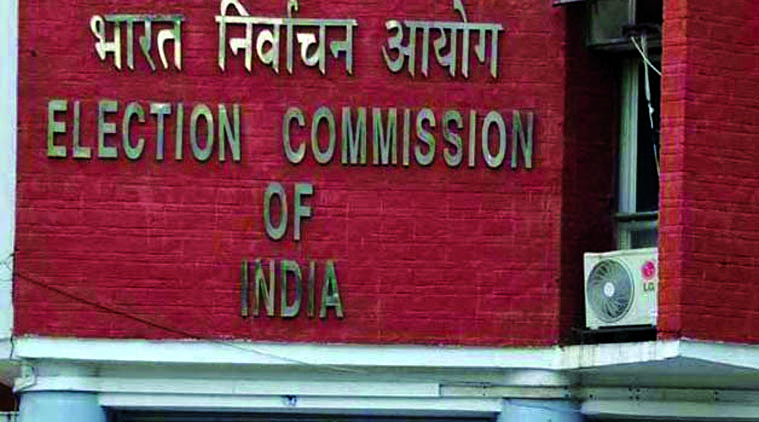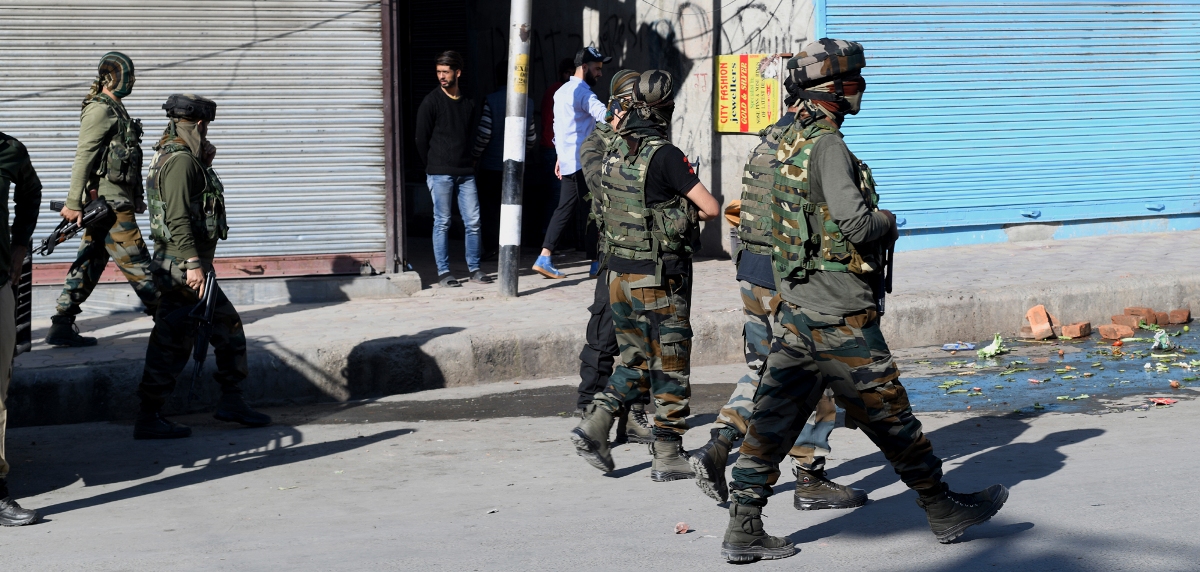by Dr Tasaduk Hussain Itoo
The last couple of months have seen the Covid-19 crisis grow into a worldwide emergency of deep concern. For the last few weeks, the number of cases of Covid-19 outside China has increased more than 13-fold, and the number of affected countries has almost quadrupled.
As per World Health Organization (WHO) as of now there are more than 28,0000 cases in over 170 countries, and more than 11600 people have lost their lives so far and thousands more are fighting for their lives in hospitals.

In Jammu and Kashmir, Covid-19 has been declared as an epidemic owing to the detection of at least 4 positive cases so far with many suspected and under observation cases having a foreign travel history. By considering the alarming levels of inaction, spread and severity it can be predicted with the justification that in the days and weeks ahead, we may expect to see the number of cases, the number of deaths, and the number of affected countries climb even higher.
WHO made this decision that COVID- 19 can be characterized as a ‘global pandemic’. Pandemic is not a word to use lightly or carelessly. It is a word that, if misused, can cause unreasonable fear, or unjustified acceptance that the fight is over, leading to unnecessary suffering and death. But we really need to gear up and take all our efforts in combating its spread.
Levels of Disease
According to the CDC, the American Centre for Disease Control and Prevention, there are different levels of disease, based on how widespread it is and how often it occurs within a community. The first level is called “endemic.” This is the amount of disease usually present in a community; the constant presence or usual occurrence of a disease or infectious agent in a population. It’s also referred to as the “baseline level” of a disease.
An “epidemic” is a sudden increase in the number of cases of a disease above the endemic level for that area.
Finally, a “pandemic” is an epidemic that’s spread over several countries or continents. It usually affects a large number of people, usually contagious – spreading from person-to-person causing significant illness and death on an exceptionally broad worldwide scale.
Being declared as a “global pandemic of grievous concern and seeing its community spread from people- having a travel history to the most affected countries in the world including Italy, Iran and besides China, taking seriously preventive measures is the best key to remain safe.
As per CDC, everyone can help stop the spread of Covid-19 by knowing the facts and sharing them with others in your community.
Fact 1: Diseases can make anyone sick regardless of their race or ethnicity. Fear and anxiety about Covid-19 can cause people to avoid or reject others even though they are not at risk for spreading the virus.
Fact 2: For most people, the immediate risk of becoming seriously ill from the virus that causes Covid-19 is thought to be low. However, older adults and people of any age with underlying health conditions, such as diabetes, lung disease, or heart disease, are at greater risk of severe illness from Covid-19.
Fact 3: Someone who has completed quarantine or has been released from isolation does not pose a risk of infection to other people.
Fact 4: Knowing the signs and symptoms – fever, dry cough, shortness of breath with an incubation period of 2 to 14 days.

Fact 5: Persons who have been in close contact with a person known to have Covid-19 or live in or have recently travelled from an area with the on-going spread of Covid-19 are at greater risk. It is important to remember here that people, who do not live in or have not recently been in an area of on-going spread of the virus that causes Covid-19 or has not been in contact with a person who is a confirmed or suspected case of Covid-19 are not at greater risk of spreading COVID-19.
Fact 6: Large events and mass gatherings can contribute to the spread of Covid-19 via travellers who are suspected or infected cases and attend these events and introduce the virus to new communities. Examples of large events and mass gatherings include conferences, festivals, parades, concerts, sporting events, weddings, and other types of assemblies. Avoidance of social gatherings is key in combating the community spread.
Fact 7: The virus is thought to spread mainly from person-to-person, between people who are in close contact with one another (within about 6 feet) through respiratory droplets produced when an infected person coughs or sneezes. These droplets can land in the mouths or noses of people who are nearby or possibly be inhaled into the lungs. A single cough can produce up to 3,000 droplets. These particles can land on other people; clothing and surfaces around them, but some of the smaller particles can remain in the air.
Preventive Measures
Wash your hands often with soap and water for at least 20 seconds especially after you have been in a public place, or after blowing your nose, coughing, or sneezing. If soap and water are not readily available, use a hand sanitizer that contains at least 60% alcohol. Cover all surfaces of your hands and rub them together until they feel dry.
Avoid touching your eyes, nose, and mouth with unwashed hands.
Avoid close contact with people who are sick.
Social distancing is important. Put distance between yourself and other people if Covid-19 is spreading in your community. This is especially important for people who are at higher risk of getting very sick.
Stay home if you are sick, except to get medical care and. Cover your cough. Cover coughs and sneezes. Cover your mouth and nose with a tissue when you cough or sneeze or use the inside of your elbow. Throw used tissues in the trash. Immediately wash your hands with soap and water for at least 20 seconds. If soap and water are not readily available, clean your hands with a hand sanitizer that contains at least 60% alcohol.
Face Mask
If you are sick, you should wear a facemask when you are around other people and before you enter a healthcare provider’s office. If you are not able to wear a facemask (for example, because it causes trouble breathing), then you should do your best to cover your coughs and sneezes, and people who are caring for you should wear a facemask if they enter your room.

If you are not sick, you do not need to wear a facemask unless you are caring for someone who is sick (and they are not able to wear a facemask). Facemasks may be in short supply and they should be saved for caregivers.
Clean and disinfect frequently touched surfaces daily. This includes tables, doorknobs, light switches, countertops, handles, desks, phones, keyboards, toilets, faucets, and sinks. Use detergent or soap and water prior to disinfection.
(Chairman cum Director Jammu and Kashmir Innovative Foundation for Transforming Society, the author is a medical practitioner at SMVD Narayana Superspeciality Hospital Jammu.)















